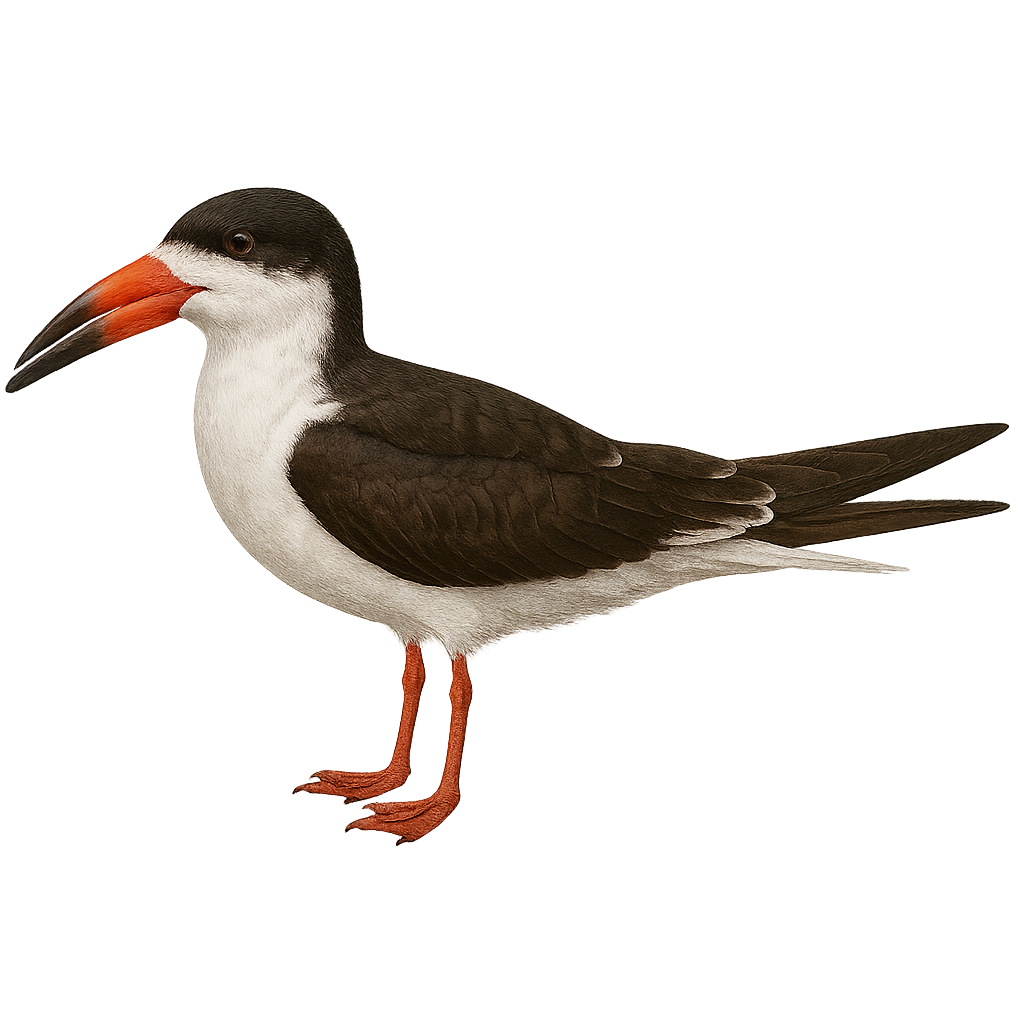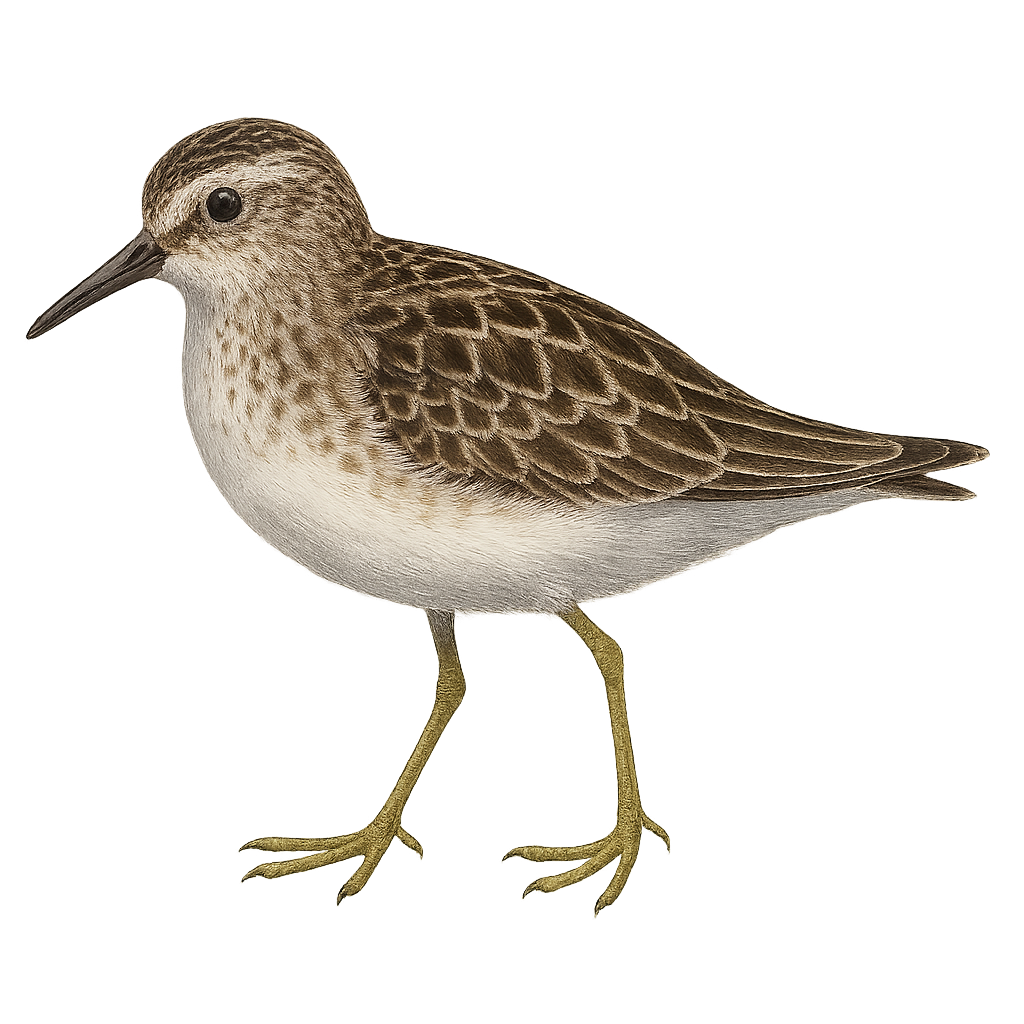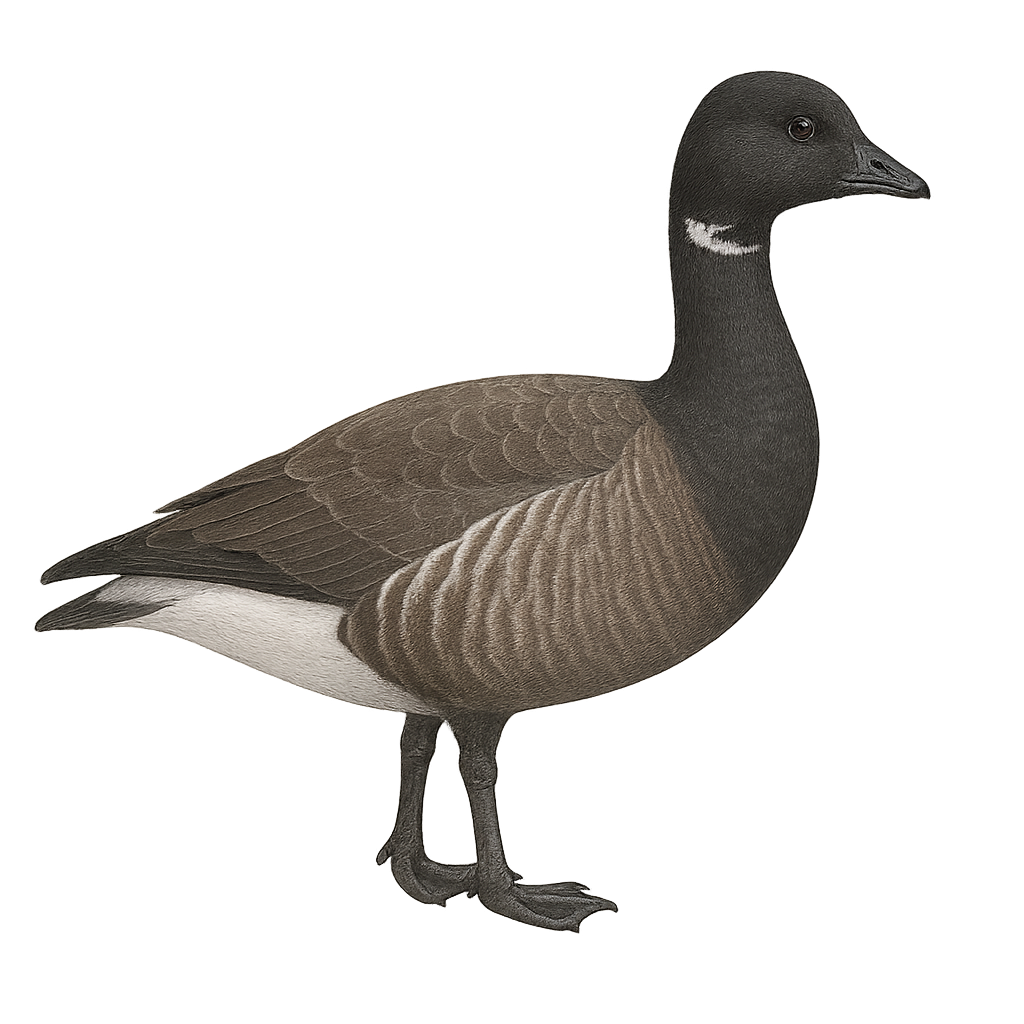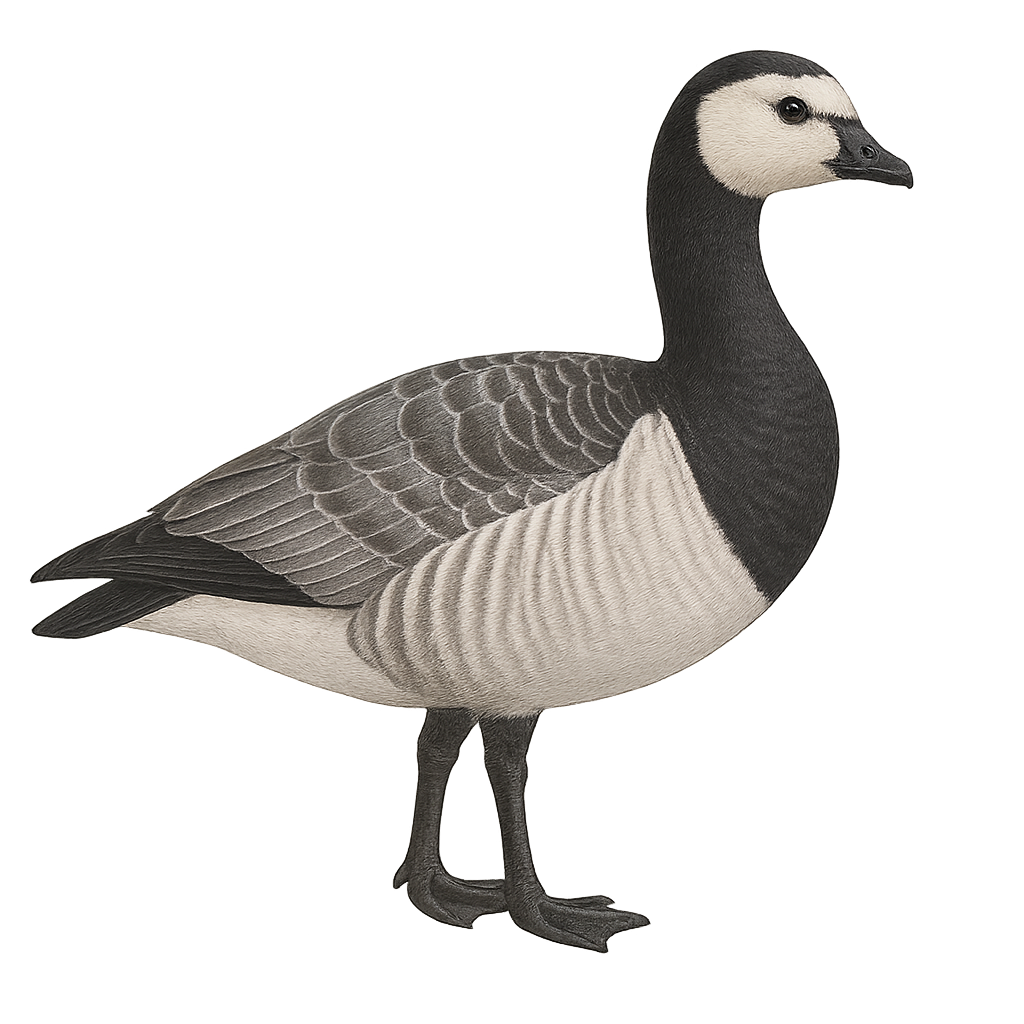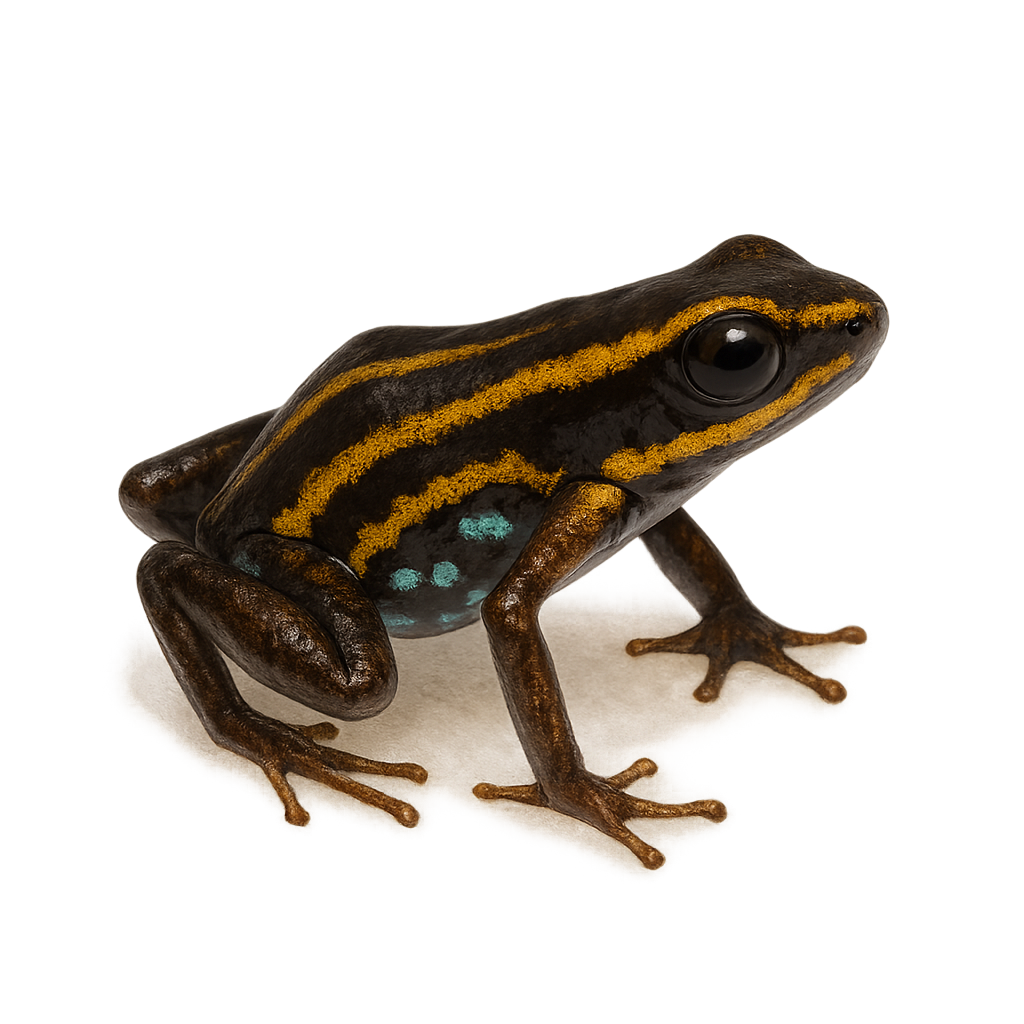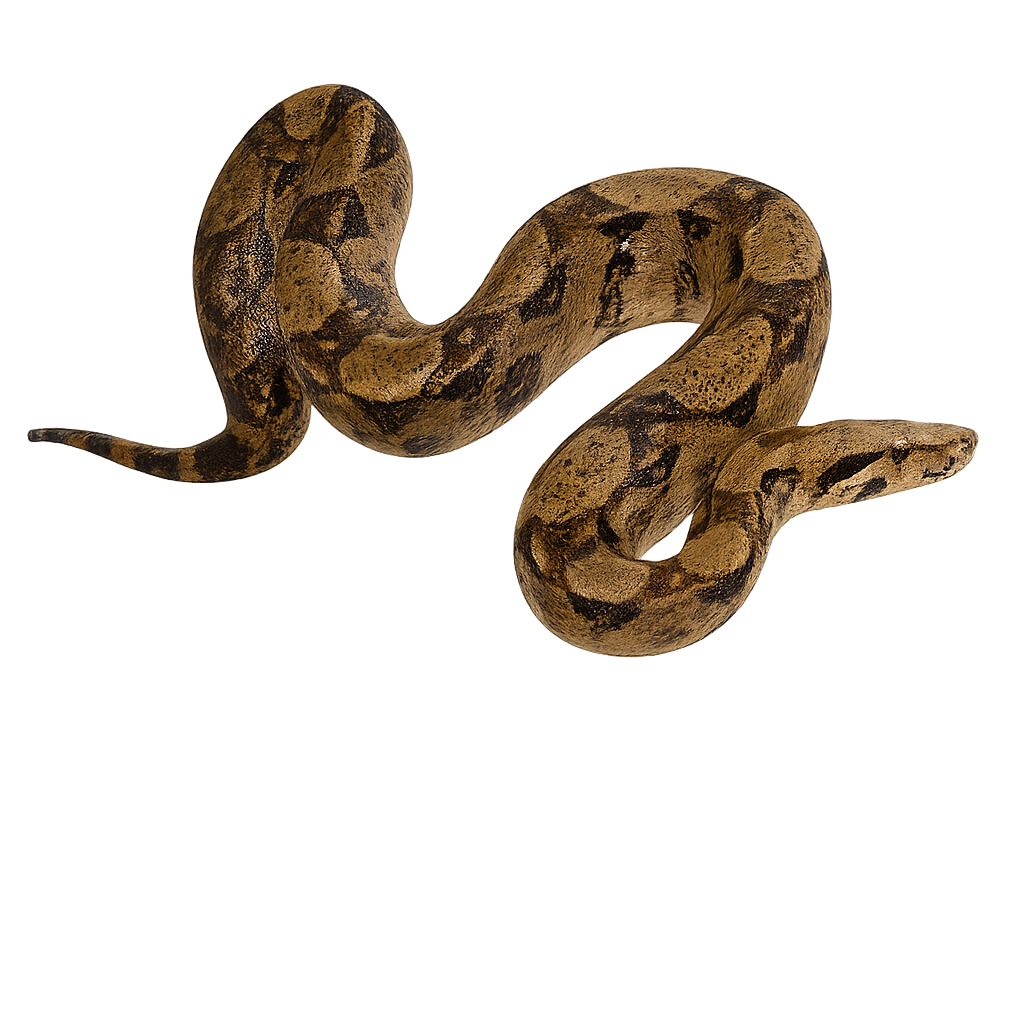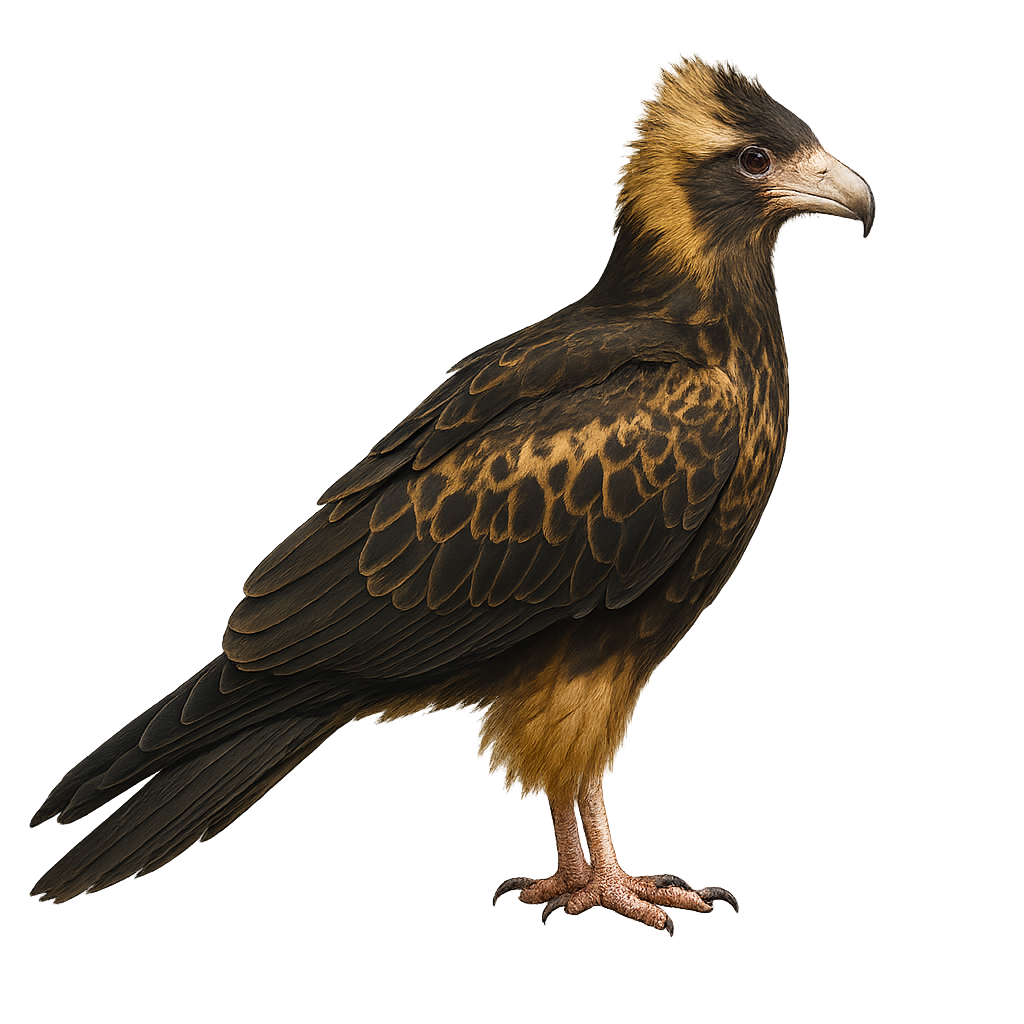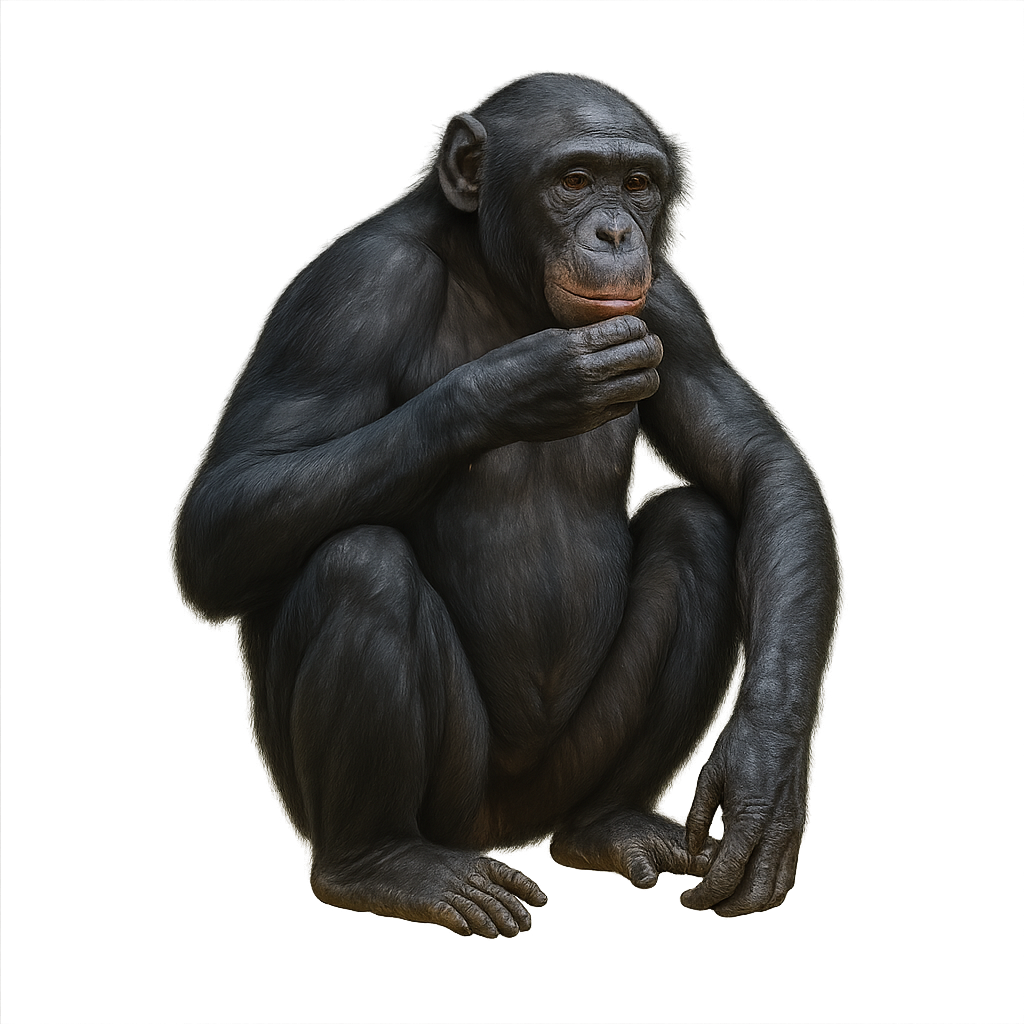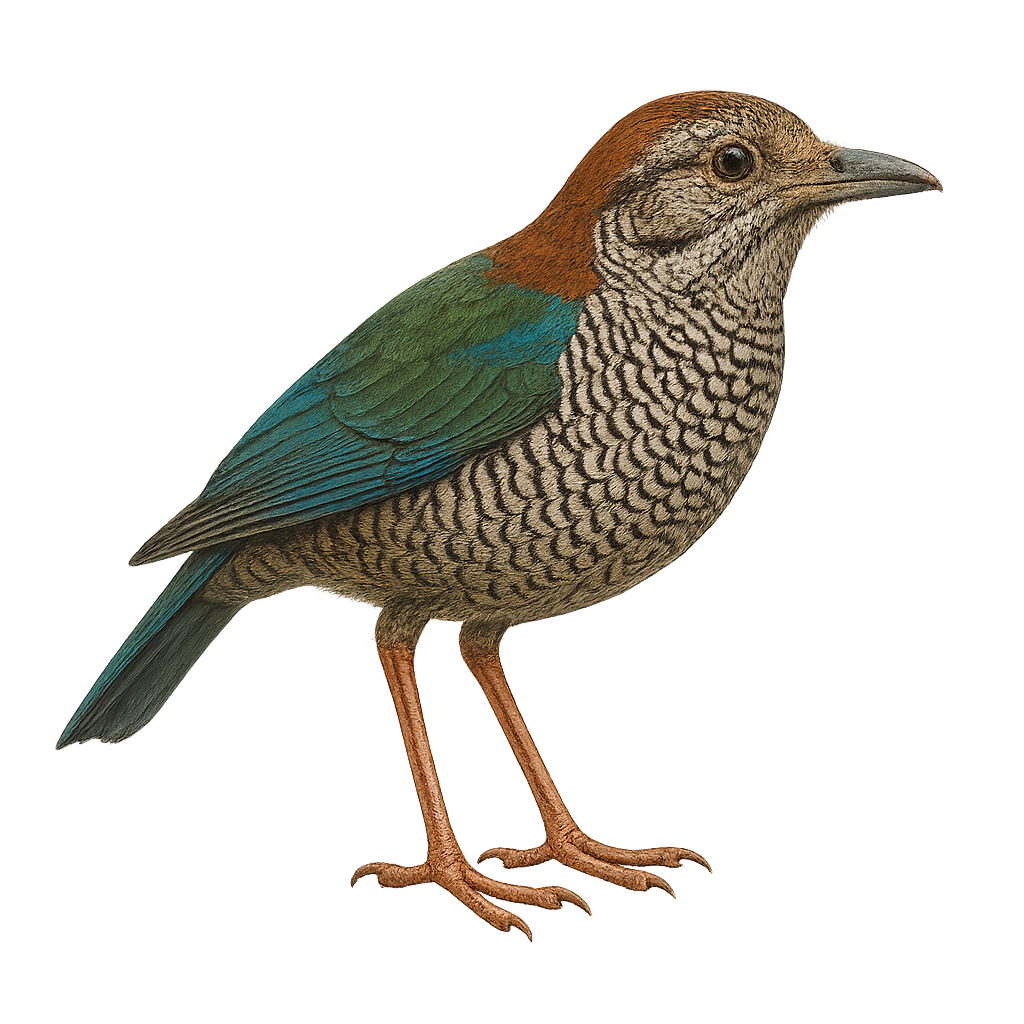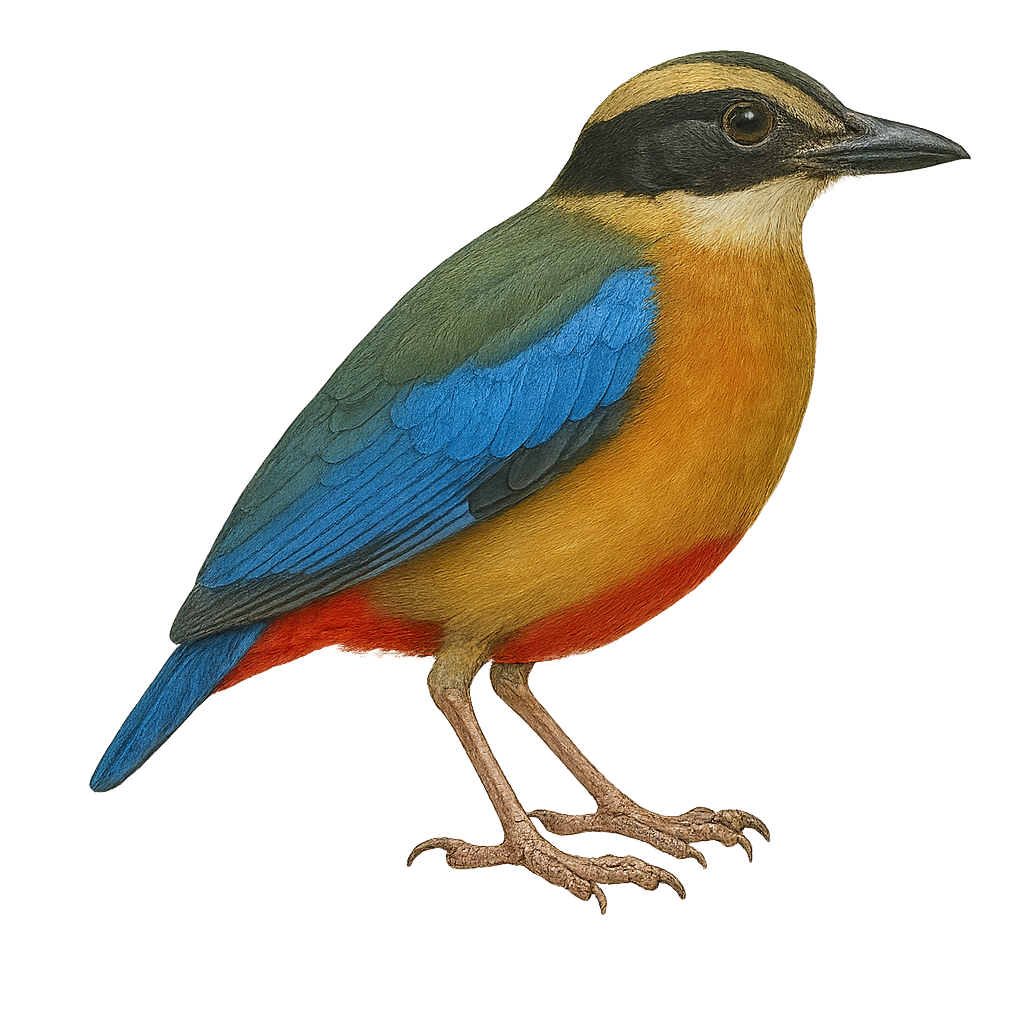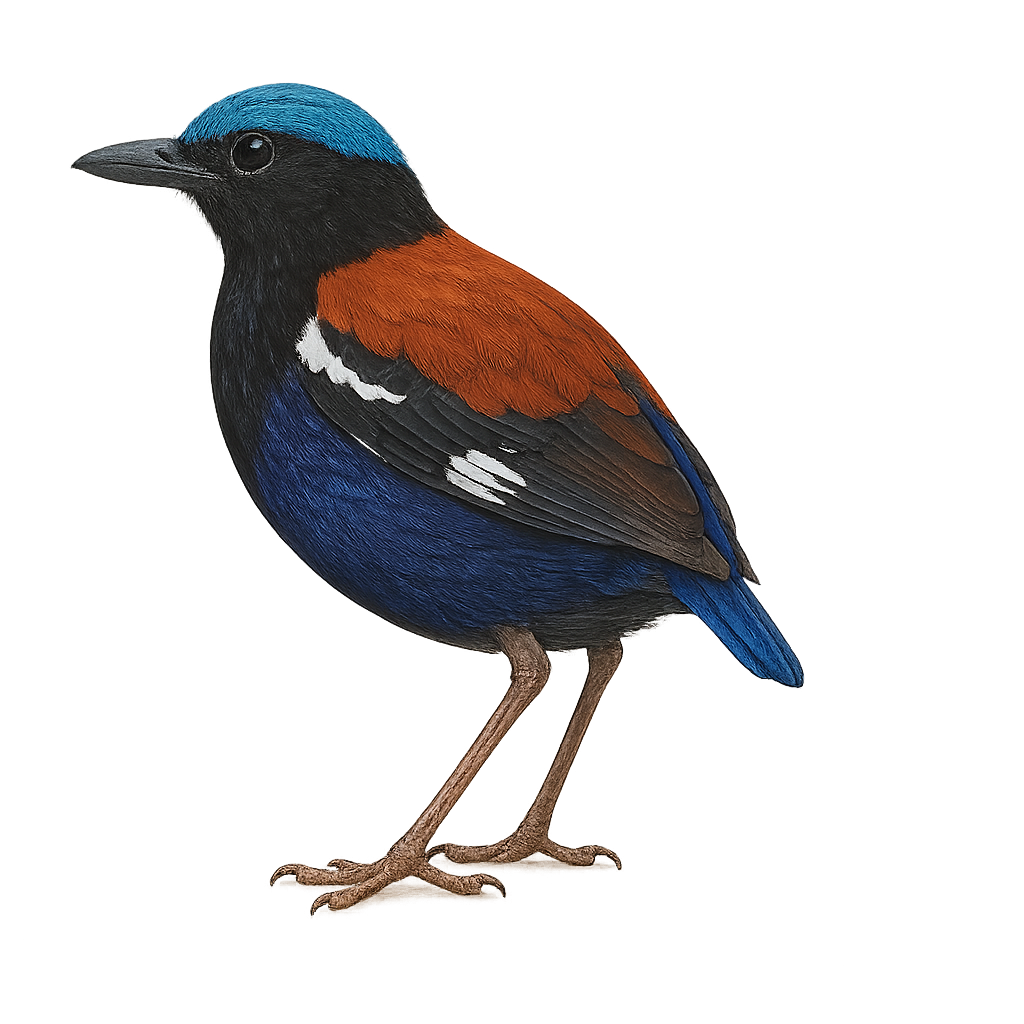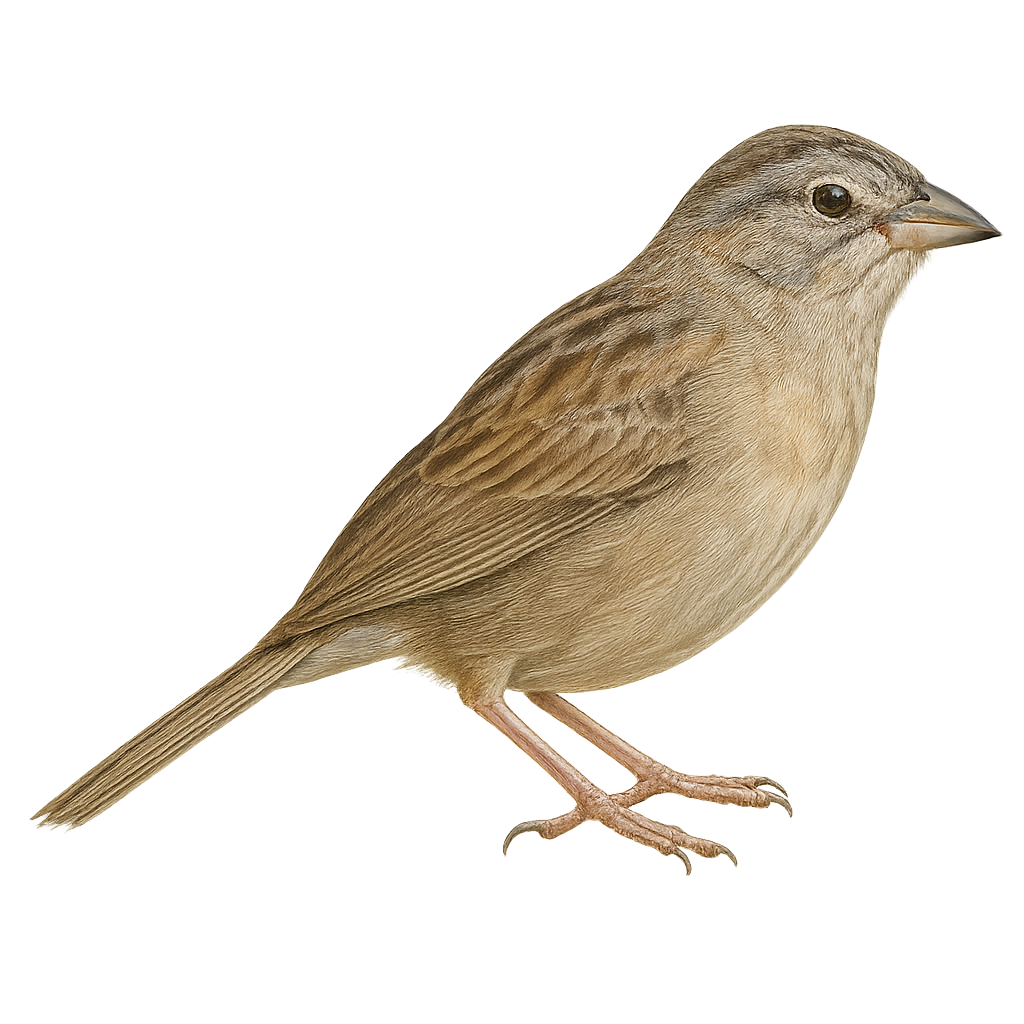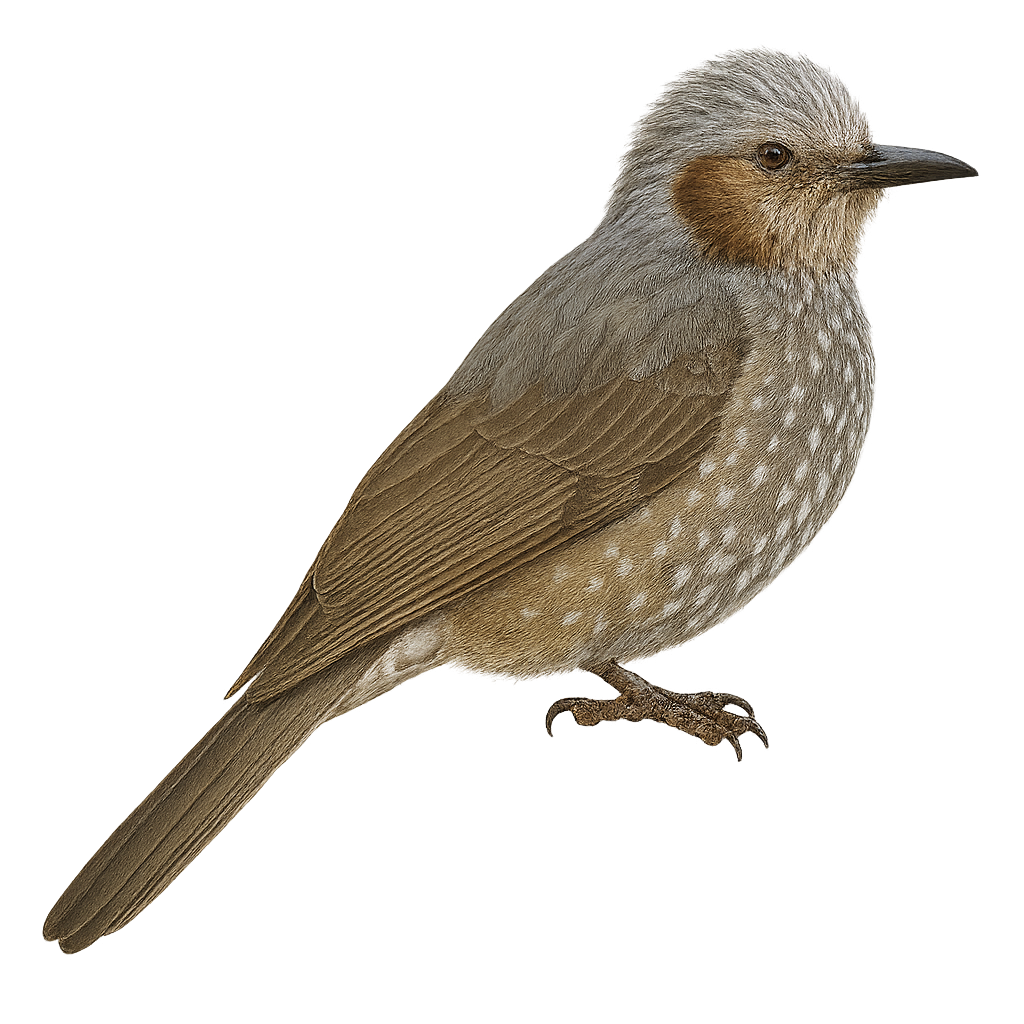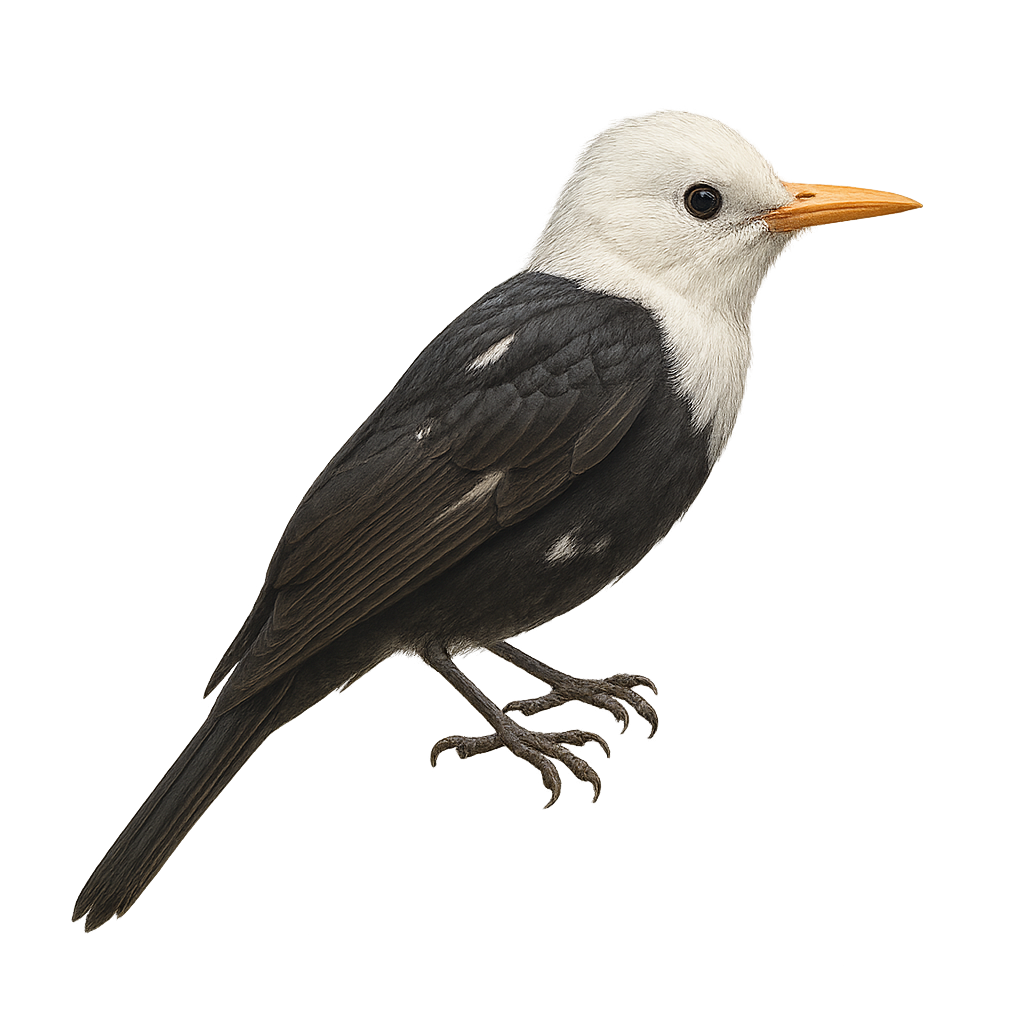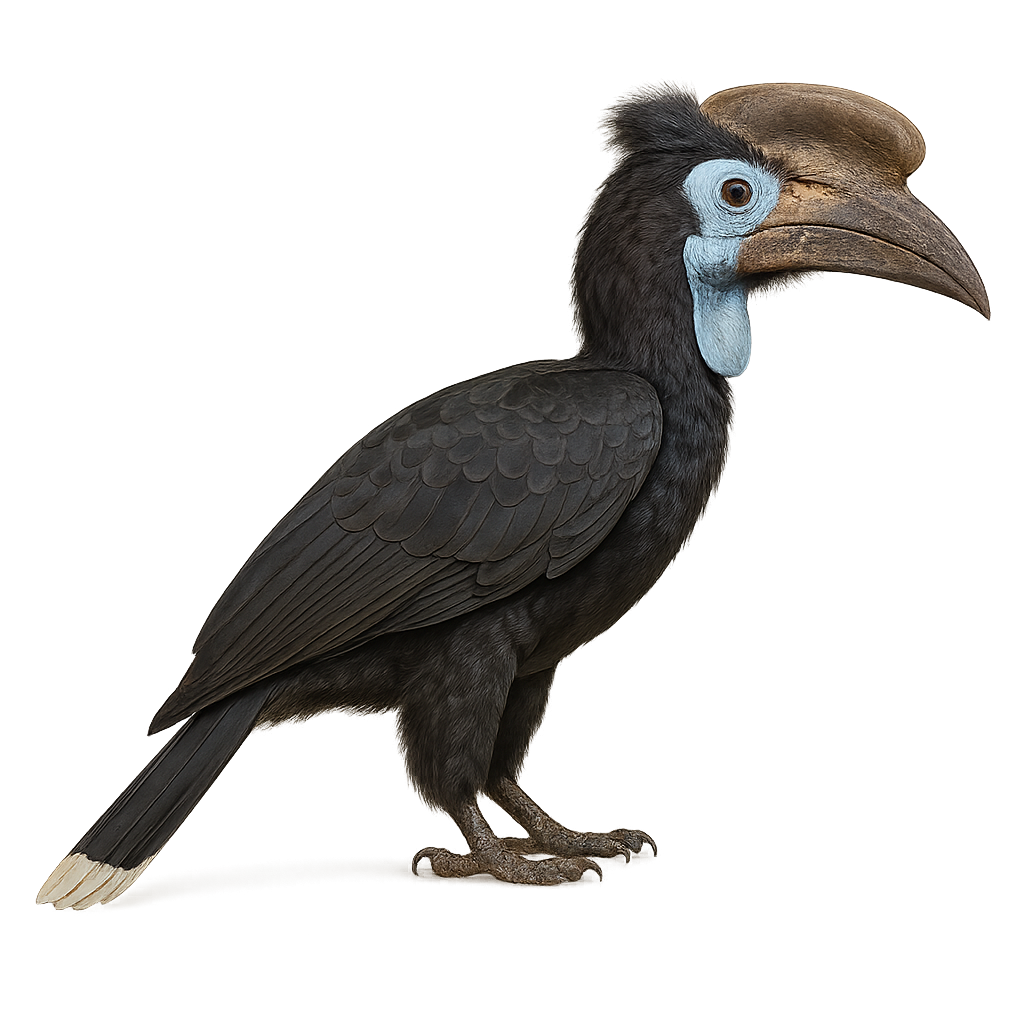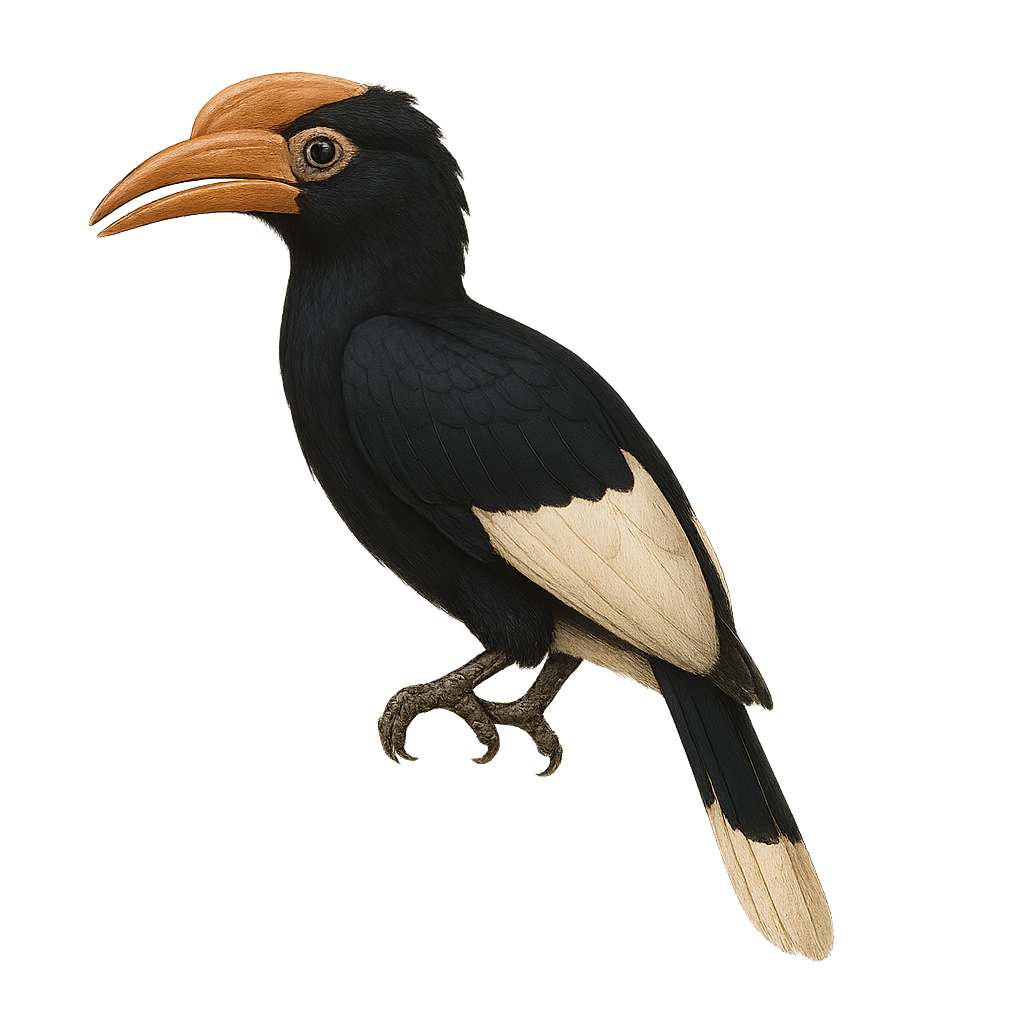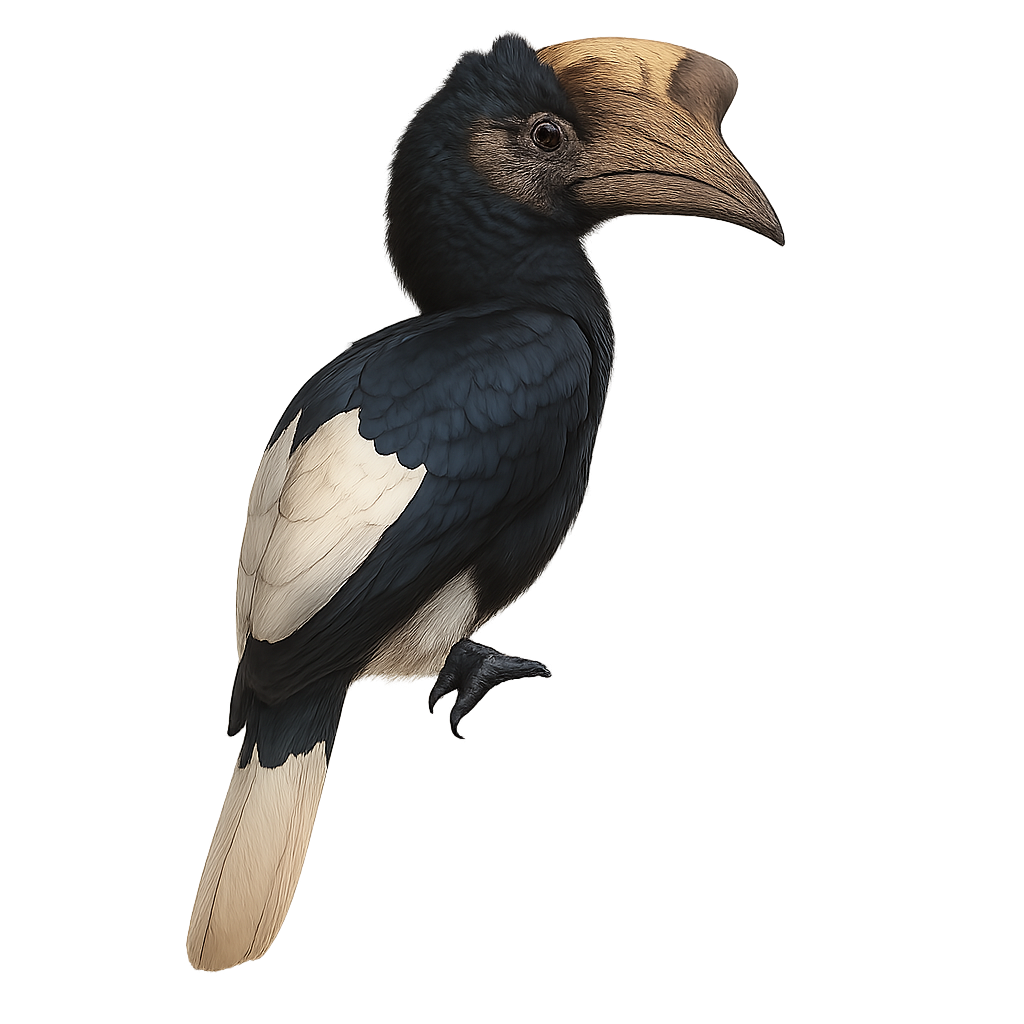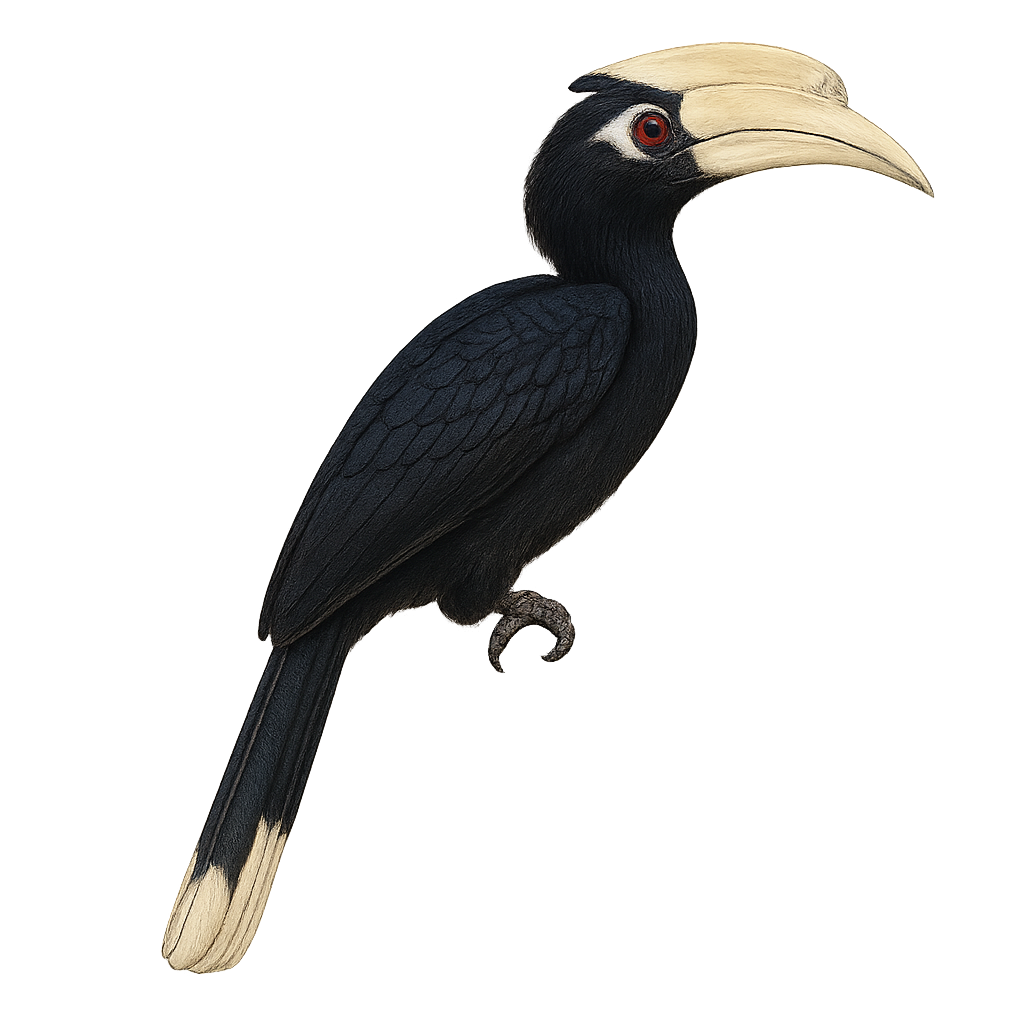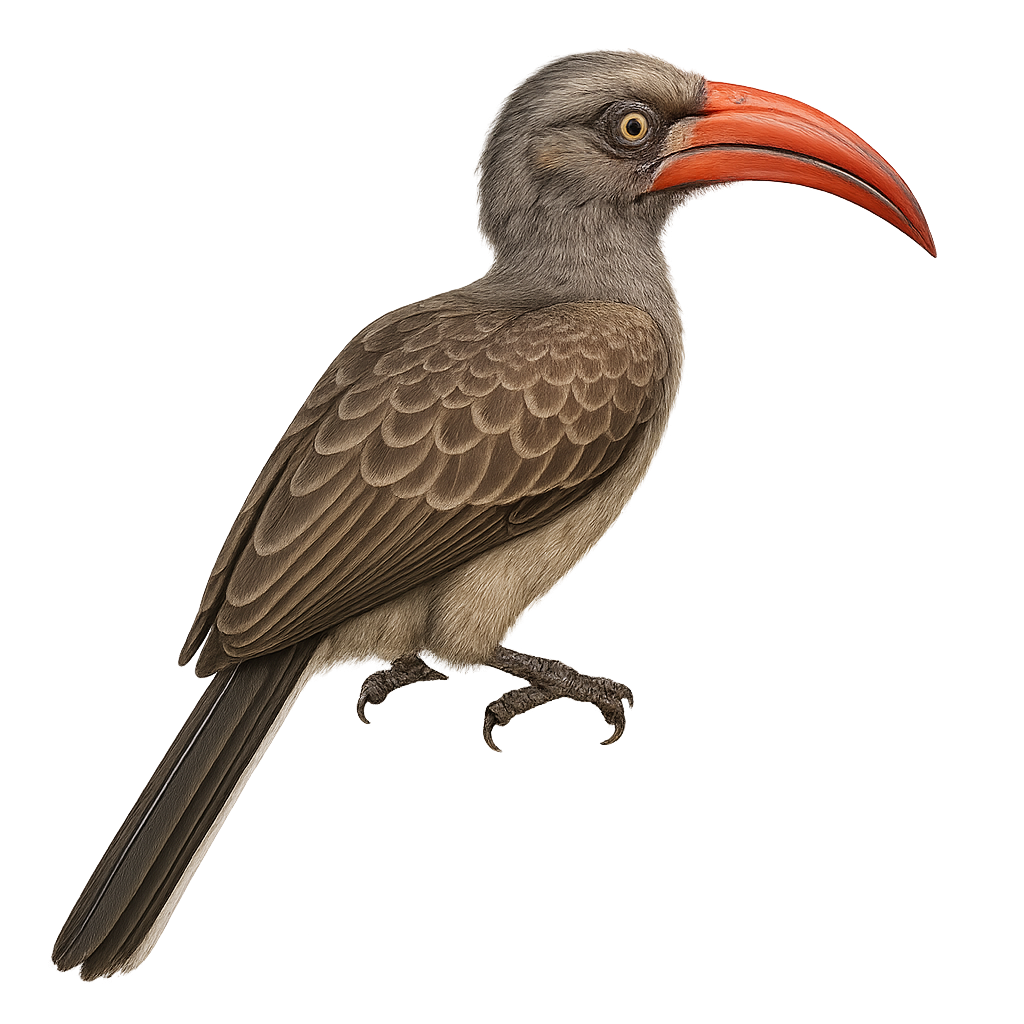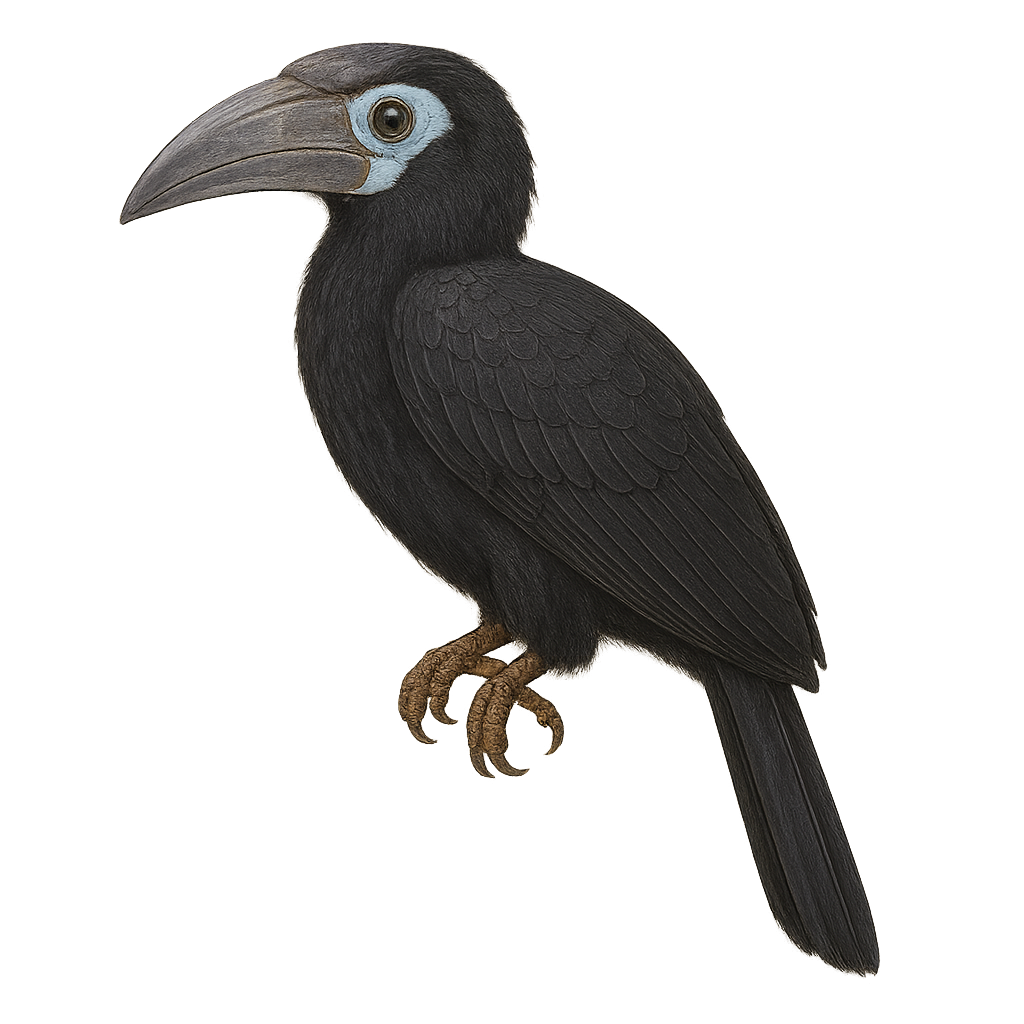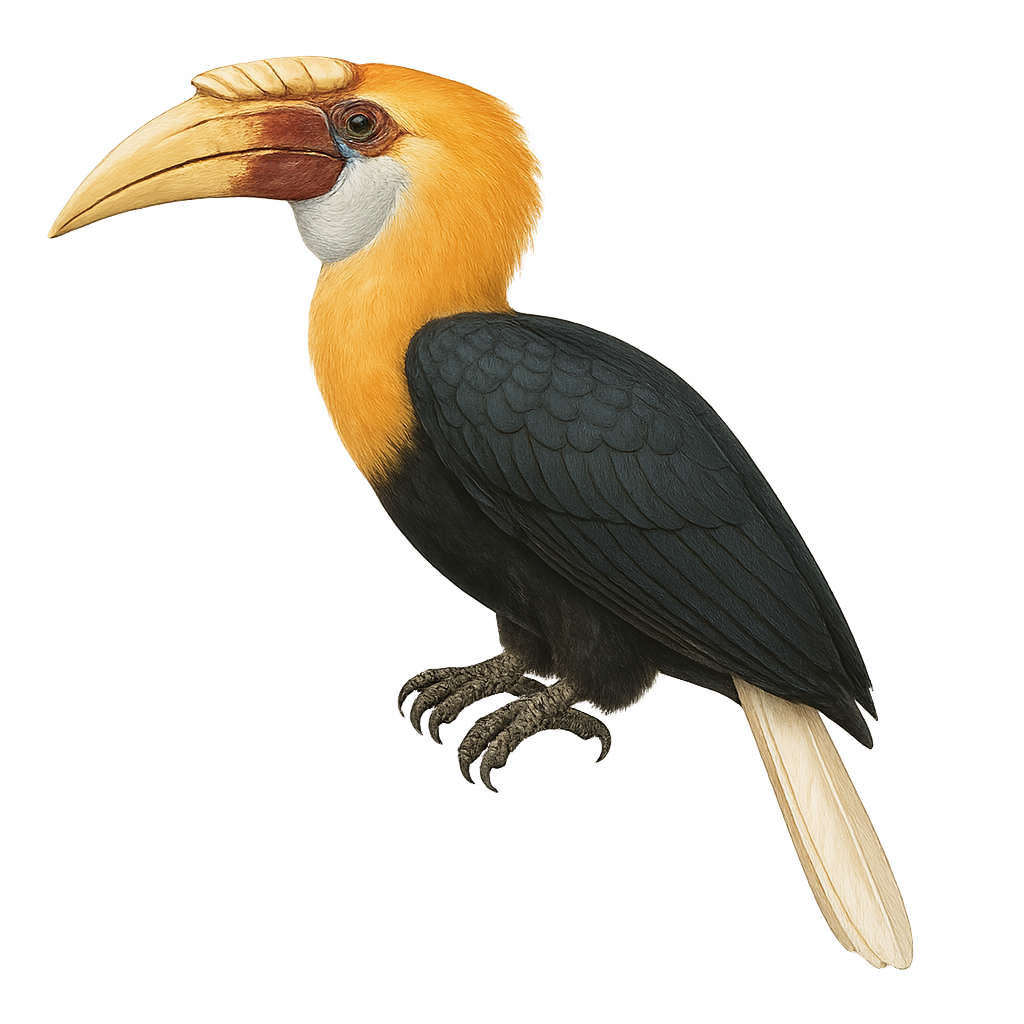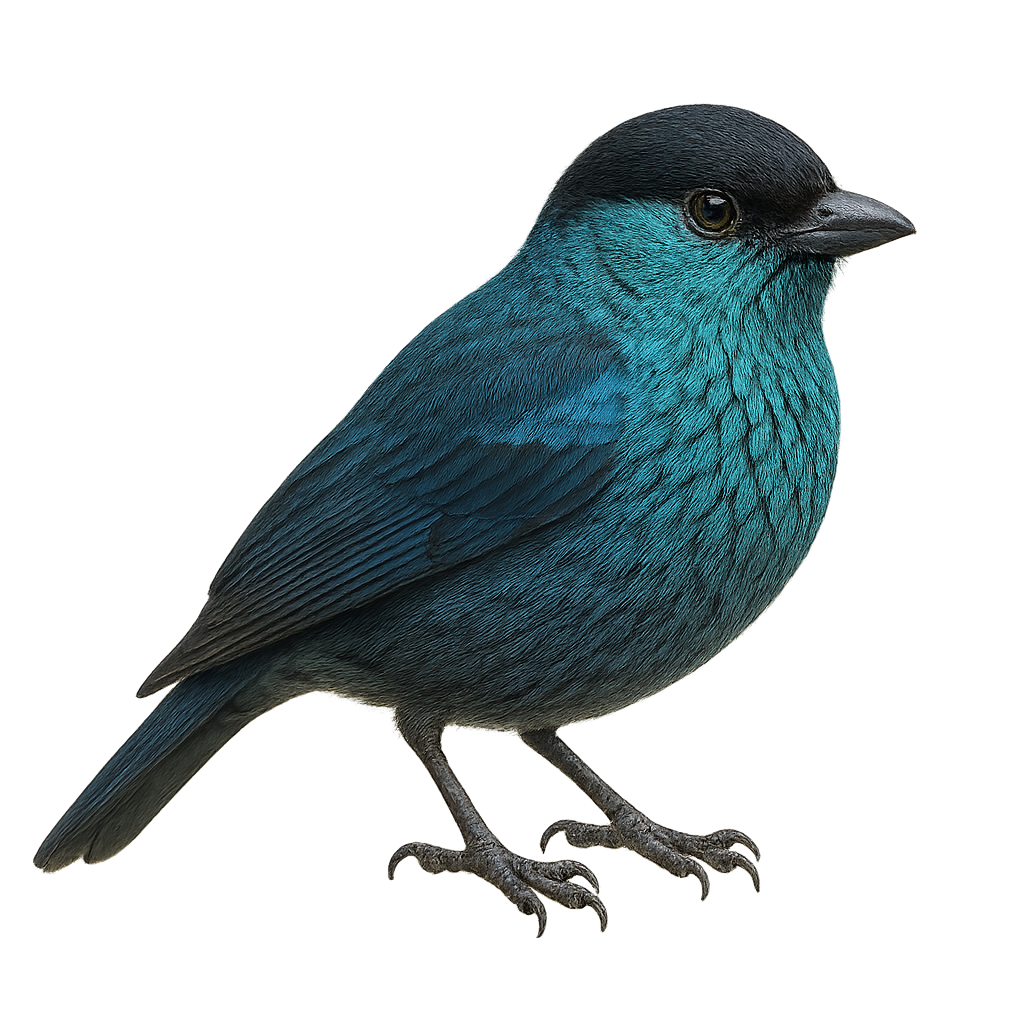The Black-throated Antshrike, or Thamnophilus melanothorax, is a bird from the Thamnophilidae family. It is recognized for its distinctive black and white plumage, with a characteristic black throat. This bird is primarily found in the humid tropical forests of the Amazon, where it feeds on insects and other small invertebrates. Measuring about 15 to 17 cm, it is often identified by its distinctive song. The Black-throated Antshrike is a territorial bird, often observed in pairs or small family groups. Although not considered threatened, deforestation poses a potential threat to its natural habitat.
The Black Skimmer, or Rynchops niger, is a distinctive waterbird known for its unique scissor-like bill. The lower mandible is longer than the upper, allowing it to skim the water's surface to catch fish. This feeding behavior is fascinating to watch. Adults have black plumage on their back and white on their belly, with long, pointed wings. They nest in colonies on sandy beaches or islands, often alongside other seabirds. Their distinctive call, a nasal bark, is often heard in coastal areas where they reside. These birds are primarily found in the Americas, from the southern United States to Argentina.
The Broad-billed Sandpiper, Calidris falcinellus, is a small wader bird belonging to the Scolopacidae family. It is identifiable by its slightly down-curved bill and brownish plumage with lighter patterns on the belly. During the breeding season, it displays more vibrant colors with black streaks on the back. This migratory bird breeds in the Arctic regions of Scandinavia and Russia and migrates to the wetlands of Africa, South Asia, and Australia for winter. It primarily inhabits marshes, mudflats, and muddy shores where it feeds on small invertebrates. Its ability to travel long distances makes it a remarkable voyager.
The Beluga is a remarkable cetacean, easily recognizable by its immaculate white color and streamlined shape. Unlike many other dolphins, the Beluga has a rounded forehead, called a "melon," which allows it great head flexibility. What also makes the Beluga unique is its ability to produce a wide variety of sounds, which it uses to communicate and navigate in the cold waters of the Arctic seas, the North Atlantic, and rivers. It primarily feeds on fish, crustaceans, and mollusks, hunting them with its excellent echolocation ability.
Belugas live in social groups called "pods" and are known for their social behavior and interaction with humans. Despite its popularity, the Beluga is vulnerable to water pollution and climate change, which affect its natural habitats.
The Brant Goose is a medium-sized waterfowl belonging to the Anatidae family. It is characterized by its dark plumage, with a black head and neck, featuring a small white patch on the side of the neck. Its belly is lighter, contrasting with the rest of its body. This migratory bird breeds in Arctic regions and winters along temperate maritime coasts. It primarily feeds on aquatic plants and grasses found in intertidal zones. The Brant Goose is often seen in large flocks, which helps protect it from predators. Although generally discreet, it can become noisy when disturbed.
The Barnacle Goose, Branta leucopsis, is a medium-sized waterfowl belonging to the Anatidae family. It is easily recognizable by its white face contrasting with its black neck and chest. Its back is light gray, while its wings display darker gray shades. It primarily inhabits Arctic regions for breeding, migrating to more temperate areas in winter. Its preferred habitats include coastal areas, estuaries, and wet meadows. The Barnacle Goose is a gregarious bird, often seen in large flocks. It feeds mainly on aquatic vegetation, grasses, and herbs. Although its conservation status is currently assessed as "least concern," it remains vulnerable to climate change and habitat degradation.
The Black-crowned Night Heron is a medium-sized bird, easily recognized by its silver-gray plumage and piercing yellow eyes. It primarily inhabits marshes, estuaries, and lake shores in Europe, Asia, and North Africa. This nocturnal bird is an excellent fisherman, feeding on fish, crustaceans, and invertebrates, which it captures with its strong, pointed bill. Unlike many other aquatic birds, the Black-crowned Night Heron is primarily active at dusk, searching for food in the darkness.
The Black-crowned Night Heron is a social bird, forming colonies for breeding, but it prefers a quiet and hidden environment. While not directly threatened, it faces risks from water pollution and the destruction of its natural habitats.
The binturong is an arboreal mammal with a stocky body and long prehensile tail. Its shaggy black fur and unique scent reminiscent of popcorn make it easily identifiable. Active at night, it moves slowly through the canopy of Southeast Asian rainforests in search of fruits, small animals, and eggs. Solitary and elusive, it is increasingly rare due to habitat loss.
The Black Bittern, or Botaurus flavicollis, is a medium-sized bird belonging to the Ardeidae family. It is primarily recognized for its dark plumage and distinctive yellow neck. This bird is often found in marshes and wetlands of South and Southeast Asia. It feeds mainly on fish, insects, and small amphibians. The Black Bittern is a discreet bird, often difficult to spot due to its stealthy behavior and plumage that blends into the surrounding reeds. It is most active at dusk and dawn, making it even harder to observe. Its population is stable, although habitat degradation could pose a potential threat.
The Blue‑bellied poison frog, or Andinobates minutus, is a small, brightly colored frog native to the tropical rainforests of Colombia and Panama. Known for its vivid, toxic skin, it serves as a defense mechanism against predators. Typically measuring between 12 and 17 mm, this species displays hues ranging from blue to red, often with distinctive black patterns. It primarily inhabits leaf litter and feeds on small insects and arthropods. The Minute Poison Frog is diurnal, being active mainly during the day. Although its population is stable, it faces threats from deforestation and habitat loss.
The Boa constrictor, also known as the Emperor Boa, is a medium to large-sized snake, easily recognized by its smooth scales and complex pattern of brown and golden spots and bands. It primarily inhabits the tropical forests of Central and South America, where it hides in foliage or tree trunks, using its climbing skills to hunt and conceal itself. This non-venomous snake is a constrictor, meaning it kills its prey by wrapping around it tightly before swallowing it whole.
The Boa constrictor is generally a solitary animal, and while it is an effective predator, it primarily feeds on small mammals, birds, and occasionally reptiles. It is also popular in captivity, but like many reptiles, it is threatened by deforestation and habitat loss.
The Black-breasted Buzzard, or Hamirostra melanosternon, is an impressive raptor native to Australia, known for its distinctive black breast and ability to crack emu eggs with stones. This bird measures about 50 to 60 cm in length with a wingspan of 1.5 meters. It primarily inhabits arid and semi-arid regions, favoring open woodlands and savannas. Its plumage is mostly dark brown with black markings on the breast and broad wings. The Black-breasted Buzzard is an opportunistic hunter, feeding on small mammals, birds, and reptiles. It is also known for its unique behavior of using stones to crack open other birds' eggs.
Bongo
Cephalophus eurycerus
The Bongo is a large forest antelope native to Central Africa, recognized for its beautiful white stripes and bright orange coat. It primarily lives in dense forests, where it feeds on leaves, fruits, and bark. This antelope is usually solitary or lives in small family groups. Due to habitat loss and hunting, the Bongo is classified as a vulnerable species. Its discretion and ability to blend into its environment make it a difficult animal to spot.
The bonobo, or Pan paniscus, is a great ape native to Africa, closely related to the common chimpanzee. It is distinguished by its more slender build, black face, and pink lips. Bonobos live in complex social groups and are known for their peaceful behavior and conflict resolution through social and sexual interactions. They primarily inhabit the tropical rainforests of the Democratic Republic of the Congo. Their diet is mainly frugivorous, but they also consume leaves, flowers, and occasionally insects. Bonobos are threatened by deforestation and hunting, leading to a decline in their population.
The Brown Mesite (Geobiastes squamiger) is a terrestrial bird endemic to Madagascar, part of the Mesitornithidae family. It is characterized by its uniform brown plumage, slightly lighter on the belly, and its white-ringed eyes. This elusive bird is primarily found in the island's dry and humid forests, where it feeds on insects and small invertebrates. The Brown Mesite is monogamous, living in pairs or small family groups. Its population is declining due to deforestation and hunting, making it vulnerable to extinction. Conservation efforts are crucial to ensure its long-term survival.
The Blue-winged Pitta, or Pitta moluccensis, is a colorful and captivating bird primarily found in Southeast Asia. It is distinguished by its vibrant plumage, with bright blue wings, a red belly, and a black head with a white stripe. Measuring about 20 cm, this bird prefers humid forests, mangroves, and wooded areas. It is often seen on the ground, searching for insects and invertebrates. Although discreet, its melodious song often gives it away. A migratory bird, it moves according to the seasons, seeking habitats conducive to its survival. Its population is stable, but deforestation poses a potential threat.
The Blue-headed Pitta, scientifically known as Hydrornis baudii, is a vibrant and elusive bird native to the tropical forests of Borneo. It is easily identified by its striking blue head and a body adorned with shades of brown and black. This small bird primarily feeds on insects and small invertebrates found in the forest litter. The Blue-headed Pitta is a solitary creature, often difficult to spot due to its secretive nature and dense habitat. Although its population is currently stable, deforestation poses a potential threat to its natural environment. Birdwatchers admire this species for its vivid colors and melodious song, though observing it often requires patience and stealth.
The Botteri's Sparrow is a small, inconspicuous bird primarily found in the grasslands and shrublands of the southern United States and Mexico. It is characterized by its dull brown plumage, which allows it to blend into its surroundings. This passerine prefers open habitats with low vegetation, where it feeds on seeds and insects. Its song, though simple, is a key aspect of its territorial behavior. During the breeding season, the male often sings from a low perch to attract a mate. Despite its modest appearance, the Botteri's Sparrow plays an essential role in the ecosystem by contributing to seed dispersal and insect population control.
The Brewer's Sparrow is a small passerine bird known for its subtle plumage and modest size. It features a brown back with dark streaks, a lighter belly, and a gray head with fine stripes. This sparrow is primarily found in the arid and semi-arid regions of western North America, where it inhabits shrublands and open grasslands. It is renowned for its melodious song, often heard during the breeding season. The Brewer's Sparrow is a migratory bird, spending its winters in the southwestern United States and northern Mexico. Although relatively common, its habitat is threatened by urban expansion and intensive agriculture.
The Brown-eared Bulbul, or Hypsipetes amaurotis, is a medium-sized bird known for its brownish ear patches and grayish plumage. It is primarily found in the forests and wooded areas of Japan, Korea, and parts of China. This bird is known for its melodious and varied song, often heard at dawn. Although relatively common in its natural habitat, it can be difficult to spot due to its wary behavior. The Brown-eared Bulbul primarily feeds on fruits, nectar, and insects, playing an important role in pollination and seed dispersal.
The Black Bulbul, Hypsipetes leucocephalus, is a medium-sized bird known for its striking white head contrasting with its dark body. It is commonly found in dense forests and wooded areas of Southeast Asia. This bird is renowned for its melodious song and its adaptability to various habitats, including urban gardens. It primarily feeds on fruits, insects, and nectar, playing a crucial role in pollination and seed dispersal. Although usually solitary, it can form small groups when foraging. Its ability to adapt to different environments makes it a resilient species in the face of environmental changes.
The Black-spotted Barbet, or Capito niger, is a bird from the Capitonidae family, primarily found in the humid tropical forests of South America. It is characterized by its glossy black plumage, accented with white spots on the wings and belly. This bird measures about 18 cm in length and has a sturdy beak, suited for its diet mainly consisting of fruits, insects, and small invertebrates. The Black-spotted Barbet is often seen in pairs or small groups, actively moving through the canopy in search of food. Although its habitat is threatened by deforestation, it is currently classified as Least Concern by the IUCN.
The Black-casqued Hornbill, or Ceratogymna atrata, is a large hornbill from the equatorial forests of Central and West Africa. It is recognized by its glossy black plumage, white belly, and massive black bill topped with a broad dark casque, especially prominent in males. It inhabits dense tropical forests from Nigeria to western Uganda. An arboreal species, it lives mostly in the canopy, feeding on fruits, seeds, and small animals. Often seen in pairs or family groups, the Black-casqued Hornbill is threatened by deforestation and hunting, and is currently listed as Near Threatened.
The Brown-cheeked Hornbill, or Bycanistes cylindricus, is a large hornbill of the humid forests of West Africa, recognizable by its black-and-white plumage, brownish cheeks, and large ivory bill with a prominent casque. It inhabits lowland tropical forests, forest edges, and transitional zones, mainly in Guinea, Sierra Leone, Ivory Coast, and Ghana. Often seen in pairs or small groups, it flies noisily through the canopy. It feeds on fruits—especially figs—as well as insects and small animals. Classified as Near Threatened, the Brown-cheeked Hornbill is particularly vulnerable to increasing deforestation.
The Black-and-white-casqued Hornbill, or Bycanistes subcylindricus, is a striking bird known for its distinctive appearance and behaviors. This large hornbill features contrasting black and white plumage and a prominent casque, which helps amplify its calls. It primarily inhabits the tropical rainforests of Central and West Africa, playing a crucial role in seed dispersal due to its mainly frugivorous diet. Social by nature, it often lives in small family groups and shows some tolerance to human presence. However, deforestation and hunting threaten its natural habitat, making its conservation vital.
The Black Hornbill, or Anthracoceros malayanus, is a medium-sized hornbill native to the tropical forests of Southeast Asia, especially in Malaysia, Borneo, and Sumatra. It is recognized by its glossy black plumage, white belly, and large ivory bill topped with a flattened black casque. This hornbill inhabits lowland primary forests and is usually seen in pairs or small groups. Its diet consists mainly of fruits—especially figs—but also includes insects, lizards, and occasionally small birds. Though often quiet and elusive, the Black Hornbill is threatened by deforestation and is currently listed as Vulnerable.
The Bradfield's Hornbill, or Lophoceros bradfieldi, is a striking bird known for its large bill and slender silhouette. It features predominantly grey plumage with shades of white and black, and its bill is often adorned with red. This bird is primarily found in the arid and semi-arid regions of southwestern Africa, notably in Namibia, Botswana, and Angola. It prefers dry savannas, open woodlands, and bushy areas. The Bradfield's Hornbill is a diurnal bird, often seen in small groups or pairs. It feeds mainly on insects, small reptiles, and fruits. Although its conservation status is currently "least concern," monitoring its habitat is crucial for its continued survival.
The Bushy-crested Hornbill, or Anorrhinus galeritus, is a medium-sized hornbill found in the tropical forests of Southeast Asia, including Malaysia, Thailand, Borneo, and Sumatra. It is identified by its dark brown plumage, pale underparts, and ivory bill lacking a prominent casque. Highly social, it forms noisy family groups that move actively through the canopy in search of fruits, insects, and small animals. The Bushy-crested Hornbill inhabits lowland forests and can also be found in degraded areas. Though still locally common, it is threatened by ongoing deforestation.
The Blyth's Hornbill, or Rhyticeros plicatus, is a striking bird known for its large size and distinctive plumage. It features a massive, curved bill often adorned with bright colors. Males and females exhibit marked sexual dimorphism, with males typically having larger bills and more vibrant colors. This bird is primarily arboreal, found in the tropical forests of New Guinea and surrounding islands. It plays a crucial role in seed dispersal, aiding forest regeneration. The Blyth's Hornbill is also known for its powerful and noisy flight, often seen in small groups.
The Black-capped Tanager is a medium-sized bird with vibrant plumage ranging from blue to green, and a distinctive black cap on its head. Native to the humid forests and wooded areas of the Andes, this bird is often seen in small groups, feeding primarily on fruits and insects. Its melodious song and bright colors make it a favorite among birdwatchers. Although it is relatively tolerant of human presence, it prefers dense areas where it can easily hide. Its breeding season typically coincides with the rainy season, ensuring an abundance of food for the young.



